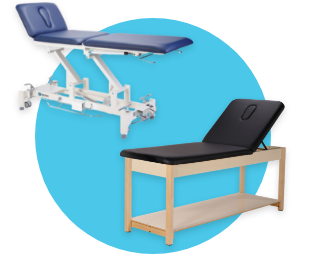We Are MeyerPT.
We are a privately held, family-owned, national distributor of physical therapy, rehabilitation, medical, and health and wellness products.
Our unique culture and business model bring together world-class distribution, exceptional customer service, sophisticated technology, and dedicated people to make ordering easy, provide visibility to spend, and allow you to focus on patient care.
Create Your MeyerPT Account Today
Gain access to professional pricing and more when you create an account today.
Our Heritage.
You know us—we have been on a first-name basis with you since day one. For over 75 years, we have been the premier supplier of physical therapy supplies and equipment.
We have built a strong standard of distribution rigor and precision for more than 1,500 manufacturers we represent through our experience servicing the consumer, professional, and business-to-business markets.

We do.
- Work with more than 15,000 chiropractic clinics across the country
- Over 75 years of experience as a premier supplier of products and equipment for chiropractors
- Offer a comprehensive product portfolio of 60,000+ products from over 1,500 vendors
- A dedicated team supporting your business
- The latest cutoff times in the industry - 6 p.m. EST / 5 p.m. PST
- Help save you time and money
- Offer professional pricing and order consolidation
- Committed to your practice’s success

We offer.
Focused Account Management
Your dedicated account management team will work with your leadership and clinical teams to make the relationship successful.
Retail Support
We help our customers monetize products for at-home therapy through both point of sale and direct to patient options.
Supply Spend Management
We assist you in managing supply spend through visibility to purchases, providing product recommendations, and facility level support.
New Clinic Success Team
We offer a new clinic opening team that will be by your side from the initial quote through post-delivery.
Cost Savings Alternatives
We combine our proprietary portfolio of high-quality, cost-effective products and exclusive partnerships with national brands to drive significant savings.
Supplies Replenishment
We take the friction out of ordering supplies through consistent pricing, an intuitive website, and personalized portal experiences.
Repair and Maintenance
We understand how equipment downtime impacts your practice and we make it easy to coordinate the repair as quickly as possible.
Onboarding and Program Management
We understand that preparation is critical for the launch of a new vendor and process for your team, and we manage the onboarding process closely to ensure success.

Your Source for Professional Physical Therapy Equipment
At MeyerPT, we are experts in physical therapy equipment. Our team will work directly with you to ensure all your needs are met—from the time of purchase through post-delivery. We offer a variety of delivery options, in-stock alternatives to accommodate your budget and space, and flexible payment options. Learn more about our selection of equipment today!
Our Culture & Values.

Tenacious
We reach our objectives with courage, rigor and grit.

Positive Attitude
We question today with belief and optimism about our future.

Service
We treat all customers with courtesy, empathy and respect.

Profitability
We achieve profitability through a commitment to performance and results.

Dynamic
We are dependable and innovative problem-solvers acting with urgency.

No Walls
With open communication we listen, learn and respond.

Integrity
We do what we say we will do.

Improvement
We strive to be better, to adapt and to grow.

Family-Owned,
Professionally Managed
We are a caring community and family acting in the company’s best interest.

Benevolent
We give back to our commmunity, people and planet.
Our Distribution Footprint.
With three strategically-located distribution centers and growing, we offer same-day shipping and the latest order cutoff times in the industry. We aim to delight our customers every step of the way—building a partnership that lasts.

Hudson, OH
Corporate HQ and Distribution Center

Los Angeles, CA
Distribution Center

Jacksonville, FL
Distribution Center
Our Team.
Acting in the best interest of our customers, the team at MeyerPT is made up of an experienced group of sales representatives and knowledgeable, courteous customer service staff. Our team is standing by, ready to help.

Contact Us.

We take the time to listen and learn about our customers’ interests and needs, offering advanced technology and distribution solutions that enhance their experience day in and day out.
Address:
6333 Hudson Crossing Parkway, Hudson, OH 44236
Hours of Operation:
Monday-Friday
8:30 a.m. - 8:00 p.m. EST